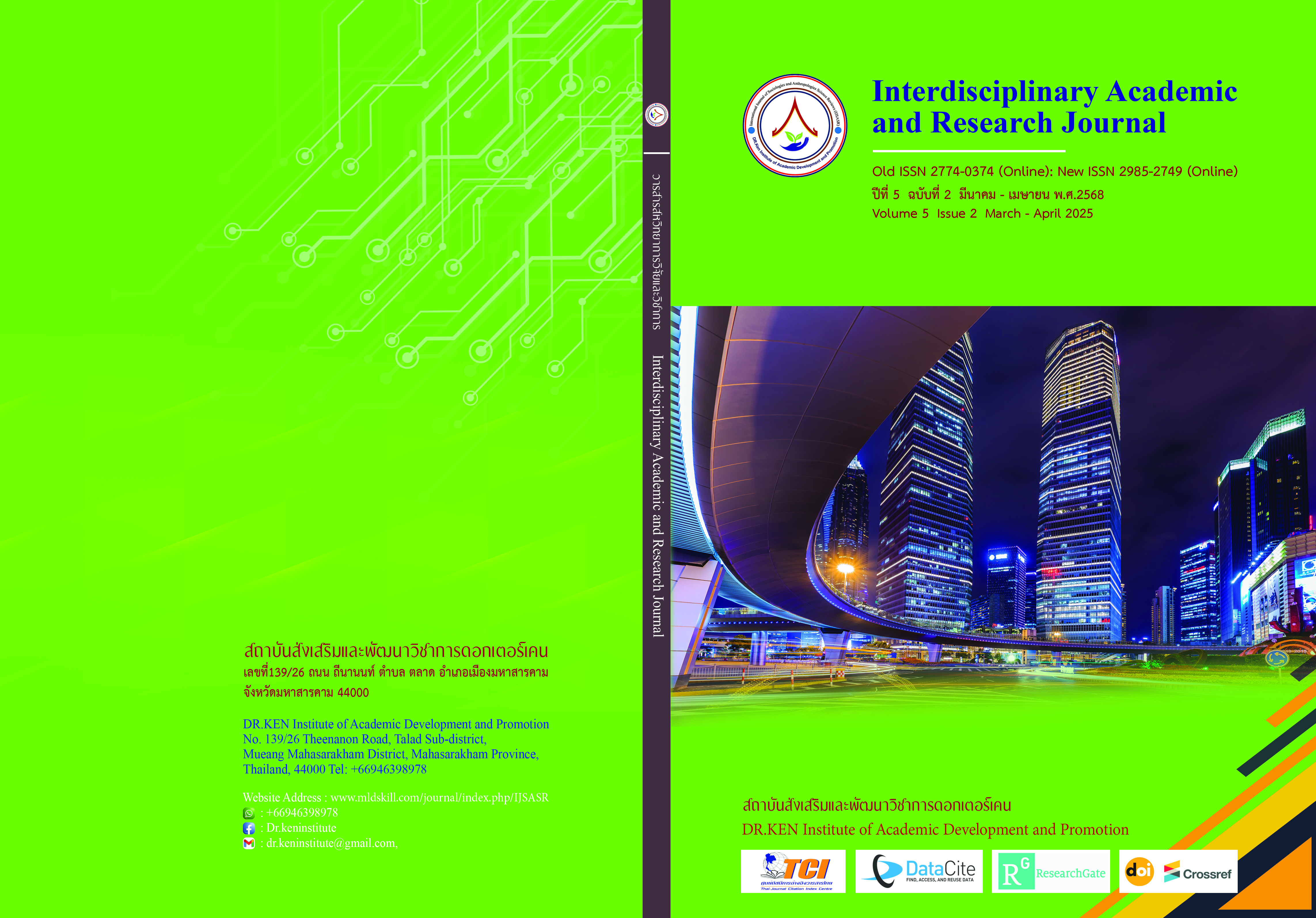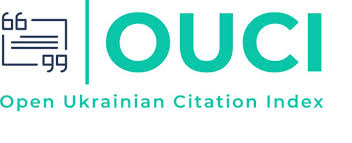The Relationship between Core Competencies and Performance Efficiency of Army Aviation Center Pilots
DOI:
https://doi.org/10.60027/iarj.2025.282173Keywords:
Core Competencies, Performance Efficiency, Army Aviation Center PilotsAbstract
Background and Aims: Core competencies of army aviation center pilots are important for national security, defense and their personnel development for the 21st century and the national strategic plan. This research aimed 1) to study the level of core competencies of army aviation center pilots 2) to compare the differences between core competencies of the army aviation center pilots classified by personal factors and 3) to study the relationship between core competencies and performance efficiency of the army aviation center pilots.
Methodology: This quantitative research used the army aviation center pilots as the population. The samples in this research were 246 army aviation center pilots, Lopburi Province. The research instrument was the questionnaires. The researcher applied statistical analysis as frequency distribution, percentage, mean, standard deviation, t-test, one-way ANOVA analysis and Pearson’s correlation coefficient.
Results: 1) army aviation center pilots had core competencies at the highest level 2) army aviation center pilots who had different personal factors as age, period of service and different flight hours had different core competencies and army aviation center pilots who had different personal factors as marital status, affiliation, position, and different monthly salary did not have different core competencies at a statistical significance level of 0.05 3) there was a high positive relationship between core competencies of army aviation center pilots and performance efficiency. The coefficient correlation was 0.929 at a statistical significance level of 0.05.
Conclusion: The higher core competencies the army aviation center pilots had, the higher performance efficiency the army aviation center pilots got. Because the core compentencies came from work experience, the organization should emphasize on the training and work.
References
กรมกำลังพลทหาร กองบัญชาการกองทัพไทย. (2565). แผนปฏิบัติราชการด้านกำลังพล พ.ศ. 2566 – 2570. กรมกำลังพลทหาร กองบัญชาการกองทัพไทย.
กรมสารบรรณทหารบก. (2567). สมรรถนะกำลังพลกองทัพบก. กรมสารบัญทหารบก.
กองทัพบก. (2544). ระเบียบกองทัพบก ว่าด้วยการพิจารณาบําเหน็จประจำปี พ.ศ. 2544. กองทัพบก.
กองทัพบก. (2564). การพัฒนากำลังพลสู่ความเป็นมืออาชีพ. กองทัพบก.
กำพล ภิญโญกุล. (2558). การพัฒนาตัวแบบสมรรถนะนักบินพาณิชย์ในประเทศไทย. (วิทยานิพนธ์ปรัชญาดุษฎีบัณฑิต). คณะรัฐศาสตร์, มหาวิทยาลัยนอร์ทกรุงเทพ.
ชำเลือง สุขประวิทย์. (2559). ลักษณะบุคคล และความสัมพันธ์กระบวนการการทำงาน และจิตวิทยาในการทำงานที่ส่งผลต่อประสิทธิผลในการทำงานของพนักงานบริษัทเอกชนในเขตปทุมวัน กรุงเทพมหานคร. รายงานการประชุมวิชาการและนำเสนอผลการวิจัยระดับชาติและนานาชาติ กลุ่มระดับด้านบริหารธุรกิจและรัฐประศาสนศาสตร์, 1(1), 998-1006.
ชูศรี วงศ์รัตนะ. (2550). เทคนิคการใช้สถิติเพื่อการวิจัย (พิมพ์ครั้งที่ 2). ไทยเนรมิต กิจอินเตอร์ โปรเกรสซิฟ.
ตวงพร ศรีชัย และคณะ. (2562). สมรรถนะนายทหารสัญญาบัตรกองทัพบกไทยในศตวรรษที่ 21. วารสารสมาคมนักวิจัย, 25(1), 54-71.
ประจิตต์ ประจักษ์จิตต์ และคณะ. (2551). สุดยอดนักบิน: Redefining Airmanship. สำนักพิมพ์แมคกรอ-ฮิล.
ปุญณัฐส์ นําพา และ ญาณัญฎา ศิรภัทร์ธาดา. (2562). แบบจําลองสมรรถนะของนักบินผู้ควบคุมอากาศยาน ประสบการณ์การบิน และนวัตกรรมการจัดการที่มีผลต่อประสิทธิผลของการปฏิบัติการบินในประเทศไทย. วารสารวิชาการ สถาบันเทคโนโลยีแห่งสุวรรณภูมิ, 7(1), 66-84.
พระราชบัญญัติว่าด้วยระเบียบข้าราชการทหาร พุทธศักราช 2521. (2521, 20 เมษายน). ราชกิจจานุเบกษา. เล่ม 95 ตอนที่ 43 ก., 1-19.
พราวแพรวสิริรัตน์ พงศ์พันธ์, ภัททิราภรณ์ คำยัง, ศุภลักษณ์ ภาวันนา, กานดา ไสยรัตน์, รัตนา สีดี. (2565). เทคโนโลยีดิจิทัล HR กับประสิทธิภาพในการทำงานของพนักงานทรัพยากรบุคคล. วารสารสังคมศาสตร์ปัญญาพัฒน์. 4 (4), 27-40.
ยุทธศาสตร์ชาติ 20 ปี พ.ศ. 2561-2580. (2561, 8 ตุลาคม). ราชกิจจานุเบกษา. เล่ม 135 ตอนที่ 82 ก.,1-70.
รวิภา ธรรมโชติ. (2561). สมรรถนะของข้าราชการทหารระดับปฏิบัติการ. Veridian E-Journal, Silpakorn University ฉบับภาษาไทย สาขามนุษยศาสตร์ สังคมศาสตร์ และศิลปะ, 11(2), 414-428.
ศูนย์การบินทหารบก. (2566). รายงานประจำปีศูนย์การบินทหารบก ประจำปีงบประมาณ 2566. ศูนย์ การบินทหารบก.
สำนักงานคณะกรรมการข้าราชการพลเรือน. (2553). คู่มือการกำหนดสมรรถนะในราชการพลเรือน: คู่มือ สมรรถนะหลัก. บริษัท ประชุมช่าง จํากัด.
สำนักงานคณะกรรมการข้าราชการพลเรือน. (2564). ยุทธศาสตร์การพัฒนาระบบราชการ (พ.ศ. 2564 – 2565). สำนักงานคณะกรรมการข้าราชการพลเรือน.
อารีรัตน์ บุญรัตน์. (2561). ปัจจัยส่วนบุคคลและการรับรู้การสนับสนุนจากองค์กรที่มีอิทธิพลต่อประสิทธิผล การปฏิบัติงานของพนักงานบริการเที่ยวบินและผู้โดยสารภาคพื้น บริษัท แพนไทยแอร์ (กรุงเทพ) จำกัด. (สารนิพนธ์ปริญญาบริหารธุรกิจมหาบัณฑิต). มหาวิทยาลัยสงขลานครินทร์.
European Aviation Safety Agency. (2020). Annual Safety Review 2020. Germany: European Aviation Safety Agency.
Federal Aviation Administration (FAA). (2023). Pilot's Handbook of Aeronautical Knowledge (2023): FAA- H-8083-25B (ASA FAA Handbook Series). Washington: Aviation Supplies & Academics, Inc.
Flight Safety Foundation. (2005). Aero Safety World. Retrieved 1 May 2024 from https://flightsafety.org/asw-landing-page-2/
International Air Transport Association. (2023). Competency Assessment and Evaluation for Pilots, Instructors and Evaluators - Guidance Material (2nd Edition). Montreal: International Air Transport Association.
International Civil Aviation Organization. (2013). Manual of Evidence-Based Training (Doc 9995). Montreal: International Civil Aviation Organization.
Downloads
Published
How to Cite
Issue
Section
License
Copyright (c) 2025 Interdisciplinary Academic and Research Journal

This work is licensed under a Creative Commons Attribution-NonCommercial-NoDerivatives 4.0 International License.
Copyright on any article in the Interdisciplinary Academic and Research Journal is retained by the author(s) under the under the Creative Commons Attribution-NonCommercial-NoDerivatives 4.0 International License. Permission to use text, content, images, etc. of publication. Any user to read, download, copy, distribute, print, search, or link to the full texts of articles, crawl them for indexing, pass them as data to software, or use them for any other lawful purpose. But do not use it for commercial use or with the intent to benefit any business.
















.png)


